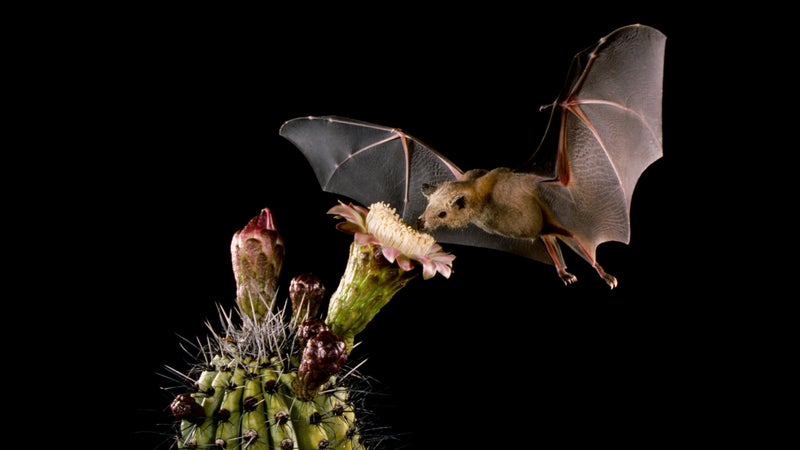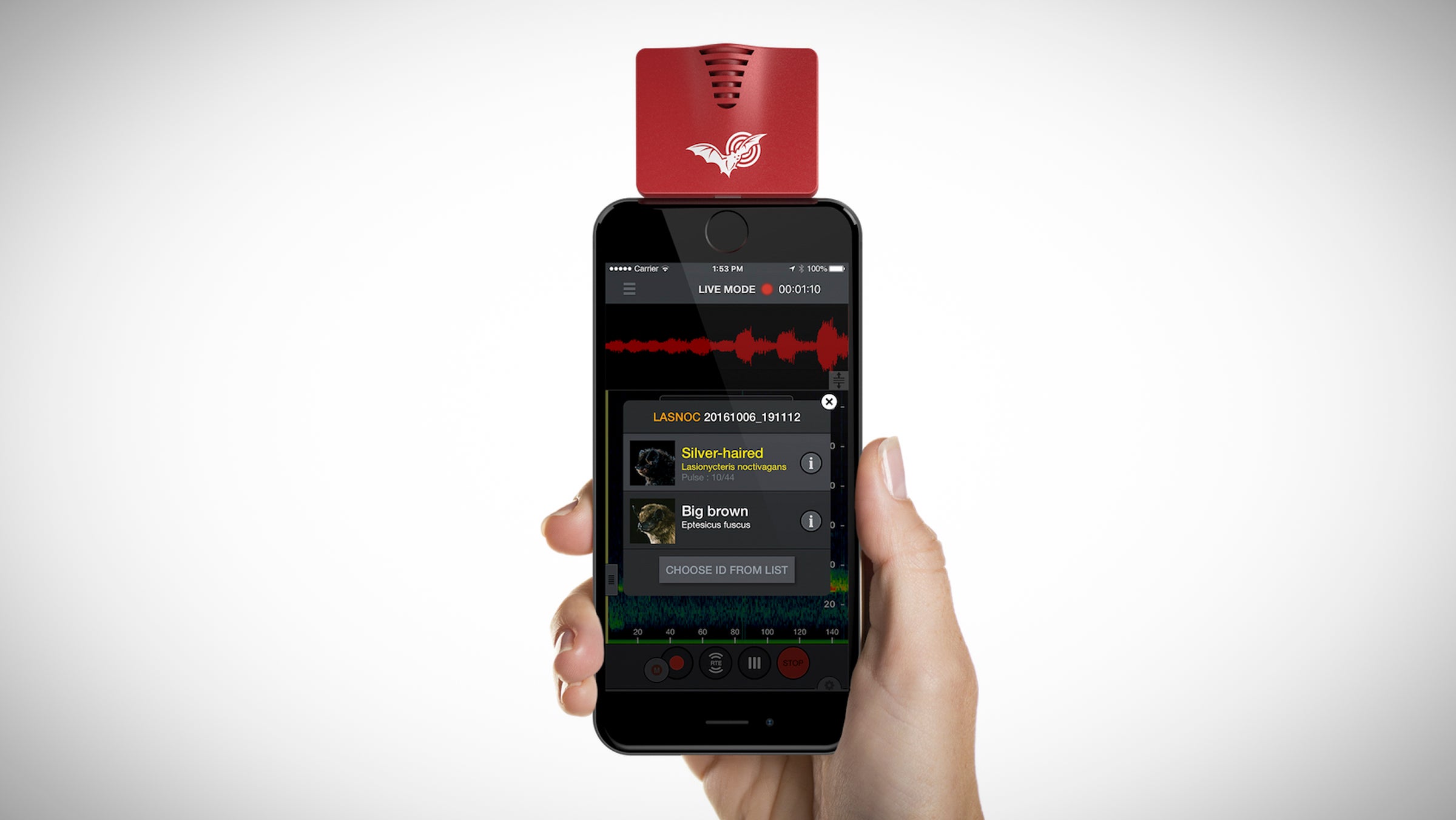IÔÇÖve always liked the idea of being╠řan amateur naturalistÔÇösomeone who could name trees and flowers and╠řidentify╠řbirds by their call. But birders always intimidated me, and the more plant guides I read, the more confused I became. Bats, though, have fascinated me since first seeing renowned ecologist and conservationist╠ř. Thankfully, a newly released handheld device called is making bat╠řidentification accessible to everyoneÔÇöno guidebook needed.╠ř

The Echo Meter Touch 2 is the size of a cracker and very light, so you can bring it with you╠řanywhere: on a hike, camping,╠řtrick or treating, or even just in your backyard. It plugs into the charging port of a smartphone and╠řcan identify dozens of species of bats by their ultrasonic call. The device works in tandem with an app and monitors a 100-foot diameter for bats that are echolocating. When it picks up a call, it translates, in real time, the ultrasonic sounds to chirps that are audible to the human ear. It will also show the call on a full-color spectrogram in the app. If you are a bat expert, that would be enough data to identify the bat. But for amateurs╠řlike me,╠řMerlin Tuttle-shot photographs╠řof the two most likely bat species pop up on the screen, too. ÔÇťSeeing those portraits on the screen as bats fly overhead really makes you feel connected to these magnificent animals,ÔÇŁ says Sherwood Snyder, the app and moduleÔÇÖs developer.
Snyder works for a company called which makes monitors for everything from birds to elephants. Their clients are mostly scientists, government agencies, and companies that use the devices to make sure new building projects don't infringe on the animals' habitats. These monitors cost thousands of dollars but Snyder╠řsaw a potential market of amateur╠řwildlife enthusiasts. After five years of development, the Echo Meter Touch 2 is the first consumer-facing╠řbat detector ever made. At $179, it is still not cheap, but itÔÇÖs significantly more affordable than anything else on the market. And once you try batting╠řyou'll discover that identifying╠řa bat can be just as exciting as spotting a whale or a bear.
╠ř


